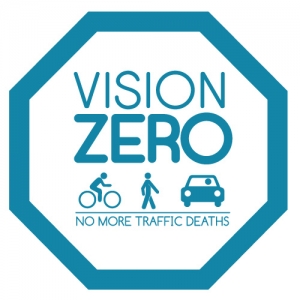
Here’s something that may, or may not, be new to readers … but it is worth consideration.
There are some very successful programs and models available for transportation executives as they seek to make motorists safer. One initiative called Vision Zero is especially popular because of its success. This program actually began in 1997 in Sweden as a way to reduce traffic fatalities, but many U.S. cities have now adopted the program and citizens are benefiting tremendously because of it.
In Sweden, the city of Stockholm has the fewest reported traffic fatalities per capita of any city in the world, and the credit is believed to belong to Vision Zero. After Sweden’s success became widely known, U.S. cities paid attention and began to implement the principles of Vision Zero. The program focuses on ending traffic deaths within a specific time frame.
 Facing more than 20 fatalities and 200 plus serious injuries per year on his city’s streets, the mayor of Boston was one of the first to commit to the program. He vowed to eliminate fatal and serious traffic crashes in the city by 2030. One feature of Boston’s current Vision Zero program is an interactive map that residents use to report areas of concern, including excessive speeding, obstructed views or other dangerous road conditions. The city is also moving to electronic crash reporting and conducting more detailed analyses of crash data from previous years. The city also is using analytics to address issues such as traffic management, traffic congestion, traffic signaling and the safety of pedestrian and bicycle traffic. Small changes have been shown to make big changes.
Facing more than 20 fatalities and 200 plus serious injuries per year on his city’s streets, the mayor of Boston was one of the first to commit to the program. He vowed to eliminate fatal and serious traffic crashes in the city by 2030. One feature of Boston’s current Vision Zero program is an interactive map that residents use to report areas of concern, including excessive speeding, obstructed views or other dangerous road conditions. The city is also moving to electronic crash reporting and conducting more detailed analyses of crash data from previous years. The city also is using analytics to address issues such as traffic management, traffic congestion, traffic signaling and the safety of pedestrian and bicycle traffic. Small changes have been shown to make big changes.
Another major city where the program has been launched is Los Angeles. Public officials there were eager to test the model because the city experiences 95 street collisions per day. Los Angeles is also using a data-driven approach to prioritize high-need areas for safety improvements. City leaders have pledged to eliminate all traffic deaths by 2025.
Since Sweden was the initial adopter of Vision Zero, public officials there have encouraged cities to use a wide array of data to determine optimal solutions for specific traffic problems. Not all cities have the same issues or problems and remedies will be different in every region. One of the program’s value propositions has been the data that records what works and what doesn’t.
Vision Zero programs have been responsible for spinning off other safety initiatives. One example is the diverging diamond interchange (DDI), which is a specific type of interchange that was developed by flipping two opposing lanes of traffic under a highway to eliminate left-hand turns through opposing traffic.
The design has been utilized in France since the 1970s and was reinvented in the United States in 2000. The first city to test the initiative was Springfield, Mo., and there was an amazing result. Intersection collisions were reduced by 60 percent during a five-month period. Beyond eliminating left-hand turns through opposing traffic, the design also makes it harder for drivers to enter ramps going the wrong direction. Now, there are many DDI locations planned, and others have been constructed throughout the United States.
Cities must continue to be proactive and models that work deserve to be tested. Transportation experts are extremely positive about Vision Zero because of the lives that the program is saving. Observers are quick to point out that data analytics around traffic collisions, the sharing of best practices, collaborative efforts and a total focus on transportation safety have resulted in what would once have been unthinkable and possibly unbelievable outcomes. Hats off to Sweden and to municipal leaders in this country who are willing to lead and launch such worthwhile initiatives!
SPI’s newsletters are excellent sources of government procurement information. Subscribe here.
